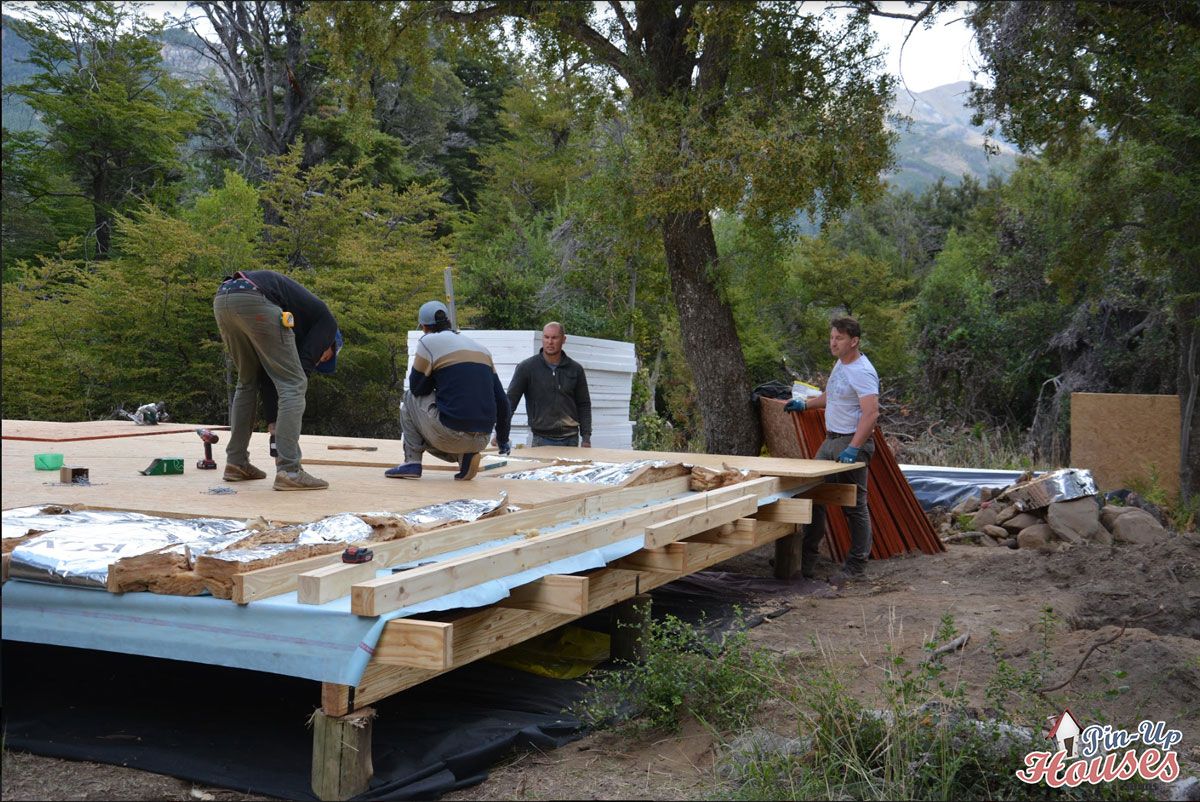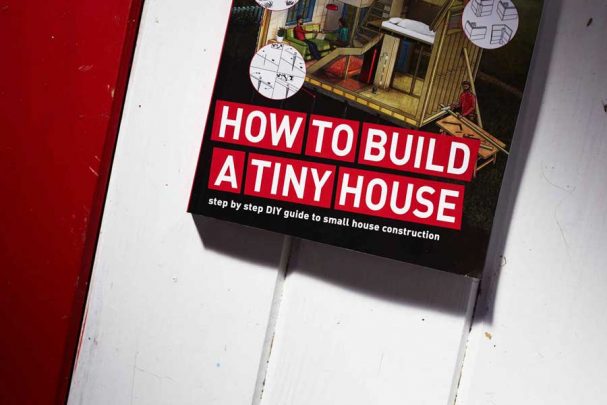
Let’s get down to the hard facts concerning the building of a tiny house itself. This time we are closely introducing the types and use of thermal insulation. Scroll down to bring some more light onto the insulation issue.

Why shall we have it?
Thermal insulation is used to maintain a pleasant climate within the building. This applies to the winter and hot summer days when the insulation protects the interior climate from unbearable heat.
Particularly, if the building is a wooden house without the accumulation properties innate in brick houses, brick houses have the advantage of the masonry mass leveling out the exterior climate changes by first accumulating the solid mass heat, thus insulating the interior climate.
Where on the house can we find it?

Basic types of thermal insulation
Mineral Insulation
Mineral insulation, or Rockwool, is a material made with fine mineral-based fibers. In many areas, it is used in the building industry – for thermal insulation purposes and sound and fire protection measures.
It can be further divided into glass and rock insulation based on the primary material used for production thereof. Glass insulation is made with sand and glass. The proportion of glass in such insulation often exceeds 80 %. Rock-based mineral insulation is made with basalt, dolerite, or blast furnace slag. Along with other additives, it is bound by a cement-based sealant.
Mineral insulation has numerous excellent properties, which make it very popular. Its primary advantages include outstanding thermally insulating properties; hydrophobic – repels water and maintains its shape even in very wet conditions. It breathes well so vapor can pass through as smoothly as through the air. Since it is not of an organic origin, it is not attacked by any fungi, molds, or parasites. Thanks to its incombustibility, it stops any fire on its way to the insulated structure. It is easy to compress such transport, and storage costs are reasonable.
Beyond the construction industry, it is extensively used in the manufacturing industry, gardening, or solar collectors.

Natural Insulation
A trend of recent years is that it existed long before the synthetic and mineral insulation commonly used today. Natural insulation is basically a step back towards our roots and the forgotten principles of sustainable development. It is absolutely non-toxic and very environmentally friendly.
Since natural insulation is a renewable material, it has been promoted and prioritized by all legislative changes in western countries. Natural insulation includes hemp, flax, wood, or even wool.

Synthetic Insulation
Synthetic insulation is represented primarily by a material produced by styrene polymerization – polystyrene. It is one of the most common insulants in the construction material market. Polystyrene aging involves changes in its physical properties, which bring along cracks. So the question arises whether this synthetic insulant is the right material to insulate your new house with. Its life is fleeting; we should also remember its demonstrable lack of environment-friendliness. In higher temperatures, it releases toxic and carcinogenic chemicals. Also, from the point of fire resistance, it fails due to high flammability. Despite that, it is widely used primarily thanks to the price, easy applicability, and excellent thermally insulating properties.

Construction material markets commonly sell polystyrene boards with thicknesses ranging from 2”/50mm, 4”/100mm, 6”/150mm, 8”/200mm to 10”/250mm. The market also offers crushed polystyrene, which can be added to concrete to reduce its weight and boost the thermal-insulating properties. Extruded polystyrene differs from classic foamed polystyrene by the special manufacturing technology. It is much stronger and, what is even more important, non-absorptive. It is used wherever insulation touches the ground, placed in the plinth area of the façade where it insulates floors in contact with the soil. It is usually colored (pink, green) or grey with an addition of graphite. Another type of synthetic insulation is polyurethane foam, known as PUR foam, used during the assembly process for adding insulation to places with poor access.
We hope this article answered at least some of your potential questions and helped you in the decision-making process. If you still have some questions about building a small house for yourself, keep scrolling for other articles on the blog. Or, as simple as that, order the book “How to build a tiny house,” and you possibly cannot have any more questions 🙂 It comes printed or digital, as a PDF, up to you!









